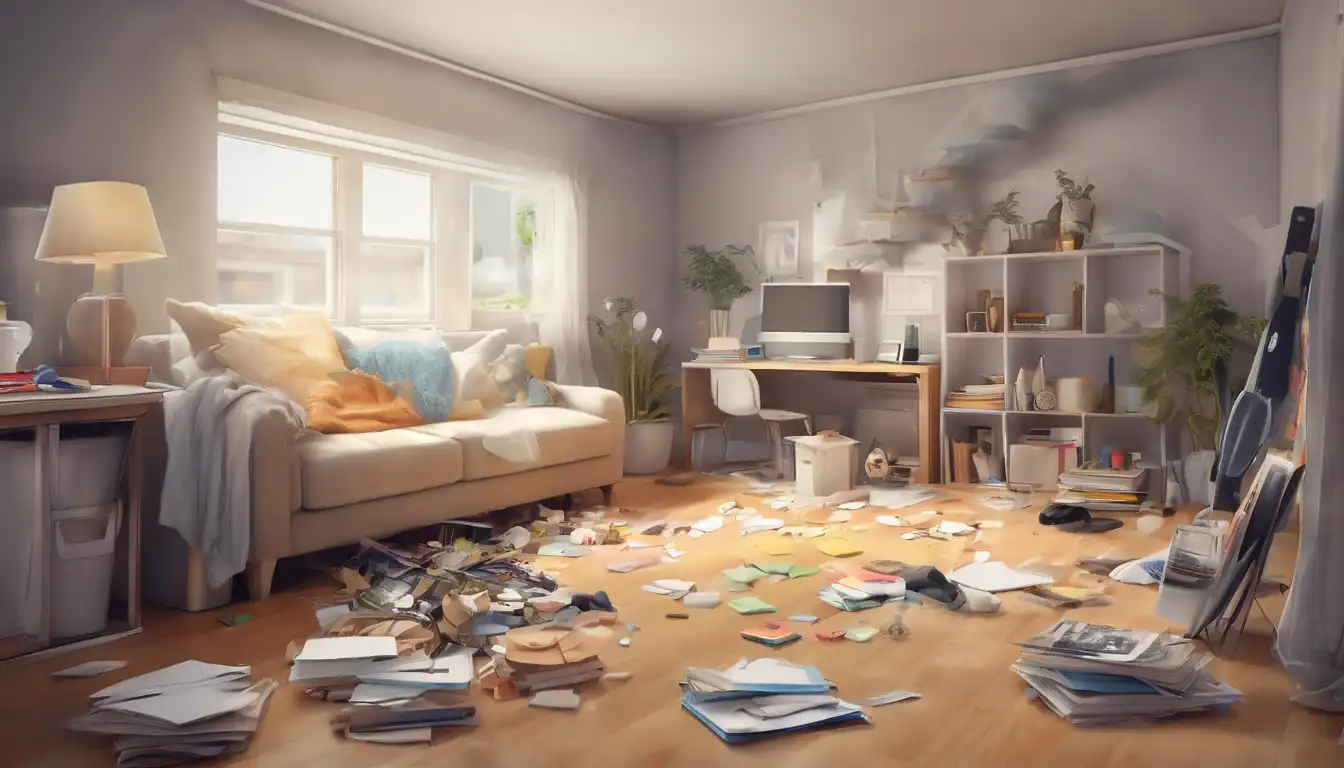Transform Your Living Space with These Quick Decluttering Strategies
Feeling overwhelmed by clutter? You're not alone. Many homeowners struggle with maintaining an organized living space, but the good news is that decluttering doesn't have to be a monumental task. With the right approach, you can transform your home from chaotic to calm in just a few hours. This comprehensive guide will walk you through easy, actionable steps to declutter your home quickly and effectively.
Why Decluttering Matters More Than You Think
Before diving into the practical steps, it's important to understand why decluttering is worth your time. A clutter-free home reduces stress, saves time searching for items, creates more functional living spaces, and can even improve your mental clarity. Studies show that organized environments contribute to better focus and reduced anxiety levels. If you're looking for more motivation, check out our guide on the benefits of minimalist living.
Step 1: Set Realistic Goals and Timeline
Begin by setting achievable goals. Instead of trying to declutter your entire home in one day, break it down into manageable chunks. A good starting point is to focus on one room or even one area within a room. Set a timer for 15-30 minute intervals to maintain focus and prevent burnout. Remember, perfection isn't the goal – progress is what matters most.
Step 2: Gather Your Decluttering Supplies
Preparation is key to efficient decluttering. You'll need:
- Three boxes or bags labeled "Keep," "Donate," and "Trash"
- Cleaning supplies for surfaces you'll uncover
- A notebook for tracking items you might need to replace
- Storage containers for organizing what you keep
Step 3: The Four-Box Method for Quick Decisions
This proven method simplifies decision-making. As you go through each area, ask yourself these questions about every item:
- Do I use this regularly? (Keep)
- Does this bring me joy? (Keep or Donate)
- Have I used this in the past year? (If not, consider donating)
- Is this broken beyond repair? (Trash)
Be honest with your answers – if you haven't used something in over a year, it's likely not essential. For seasonal items, consider our seasonal storage solutions to keep them organized but out of the way.
Step 4: Tackle High-Impact Areas First
Start with spaces that will give you the biggest visual payoff. The entryway, kitchen counters, and living room surfaces are excellent starting points. These areas are used frequently and seeing them clutter-free will provide immediate motivation to continue. Here's how to approach each:
Kitchen Counter Decluttering
Clear everything off your counters. Wipe down surfaces, then only return items you use daily. Store appliances like blenders and mixers in cabinets. This simple step can make your kitchen feel instantly larger and more functional.
Living Room Surface Strategy
Coffee tables, end tables, and entertainment centers tend to accumulate clutter. Designate specific homes for remote controls, magazines, and other frequently used items. Consider implementing a "one in, one out" rule for new acquisitions.
Step 5: Conquer Paper Clutter Efficiently
Paper clutter is one of the most common challenges. Set up a simple system:
- Immediately recycle junk mail
- Create designated spots for bills and important documents
- Go digital when possible for statements and records
- Shred sensitive documents rather than letting them pile up
Step 6: Quick Closet Organization
For clothing, use the reverse hanger trick: turn all your hangers backward. After wearing an item, return it with the hanger facing the correct direction. After six months, donate anything still on backward hangers. This method takes the emotion out of deciding what to keep. For more detailed strategies, explore our capsule wardrobe guide.
Step 7: Establish Daily Maintenance Habits
Decluttering is only effective if you maintain the results. Implement these daily habits:
- Spend 5-10 minutes each evening returning items to their homes
- Handle mail immediately instead of letting it pile up
- Make your bed every morning to start the day organized
- Do a quick "clutter sweep" before leaving each room
Step 8: Smart Storage Solutions
Invest in storage that works for your space and lifestyle. Vertical storage, under-bed containers, and multi-functional furniture can maximize space without adding visual clutter. Remember: the goal isn't to find creative ways to store everything, but to keep only what you need and use.
Step 9: Dealing with Sentimental Items
Sentimental items require special consideration. Take photos of meaningful objects you no longer need to keep physically. Designate one memory box per family member rather than keeping everything. Sometimes the memory is more important than the object itself.
Step 10: Celebrate Your Progress
After each decluttering session, take a moment to appreciate your progress. Notice how the space feels different – lighter, more peaceful, and more functional. These small victories will motivate you to continue your decluttering journey throughout your home.
Maintaining Your Decluttered Home
The real secret to long-term success is developing habits that prevent clutter from accumulating. Regular mini-decluttering sessions (15 minutes weekly) are more effective than massive annual purges. Consider implementing a "no-clutter zone" policy for certain areas to maintain your hard work.
Decluttering your home quickly is absolutely achievable with the right strategy. By breaking the process into manageable steps and focusing on high-impact areas first, you can transform your living space in just a few hours. Remember that decluttering is an ongoing process rather than a one-time event. Start small, be consistent, and soon you'll enjoy the numerous benefits of a clutter-free home. For more organization tips, check out our home organization hacks that can help maintain your newly decluttered space.
